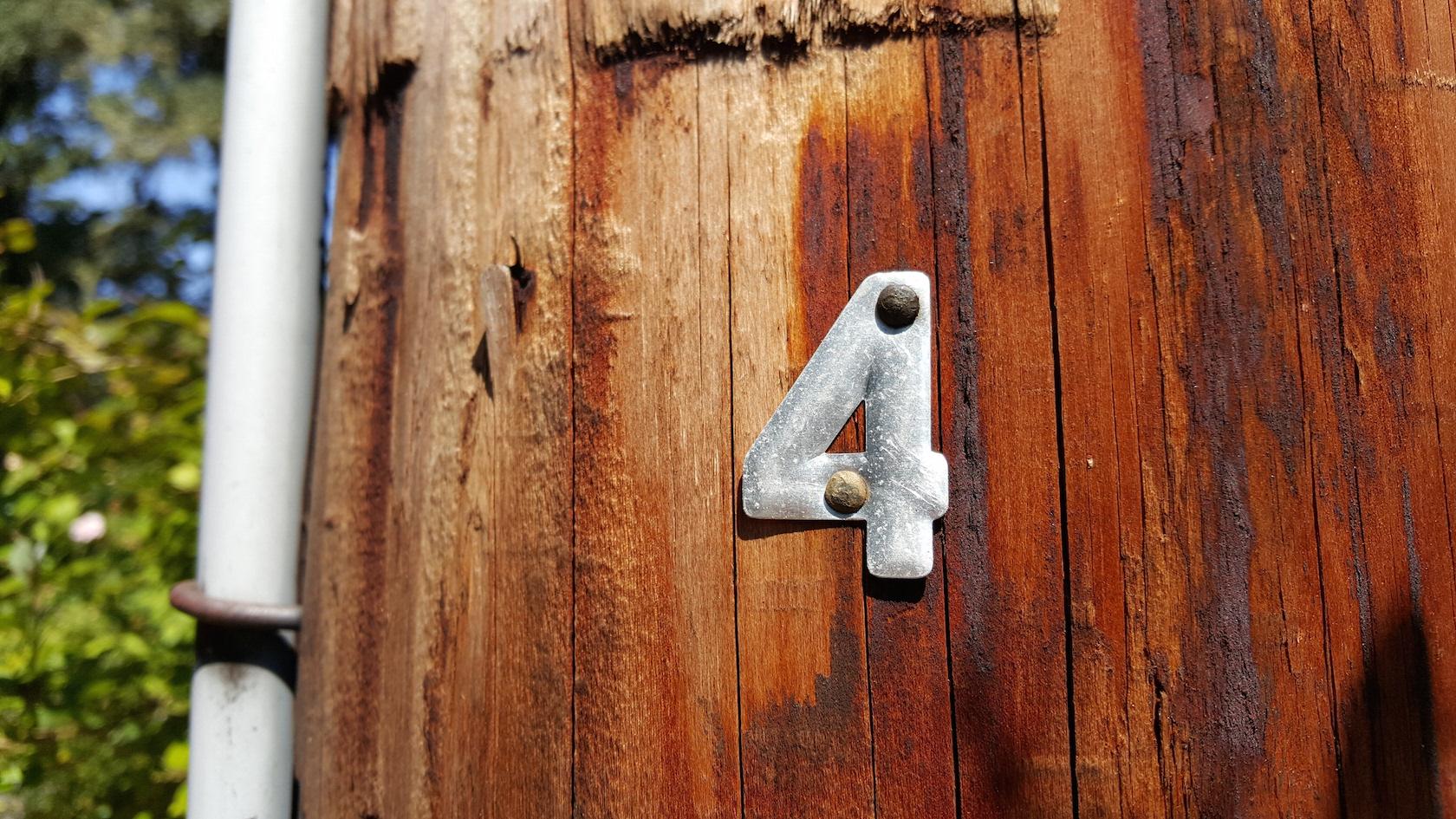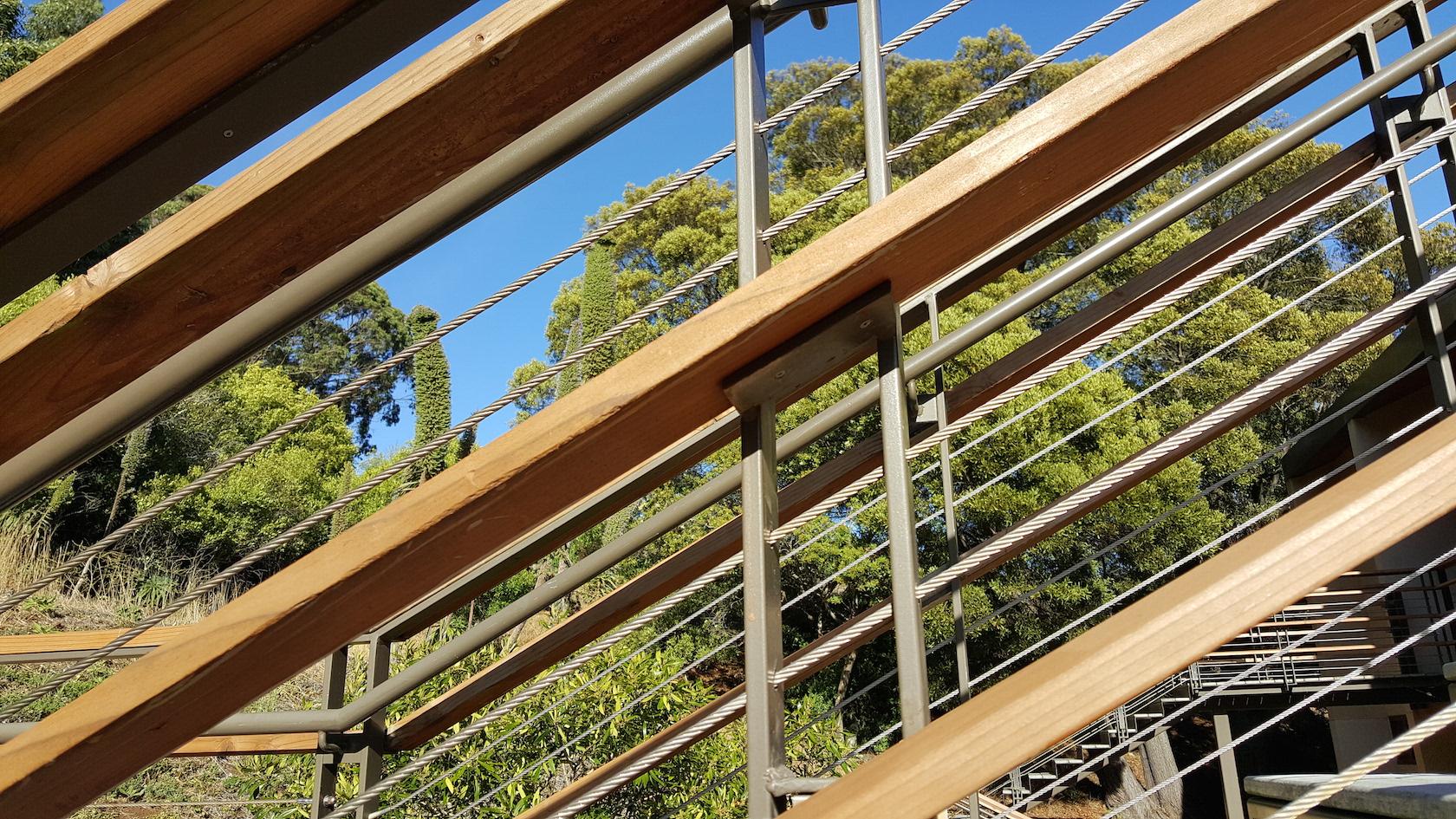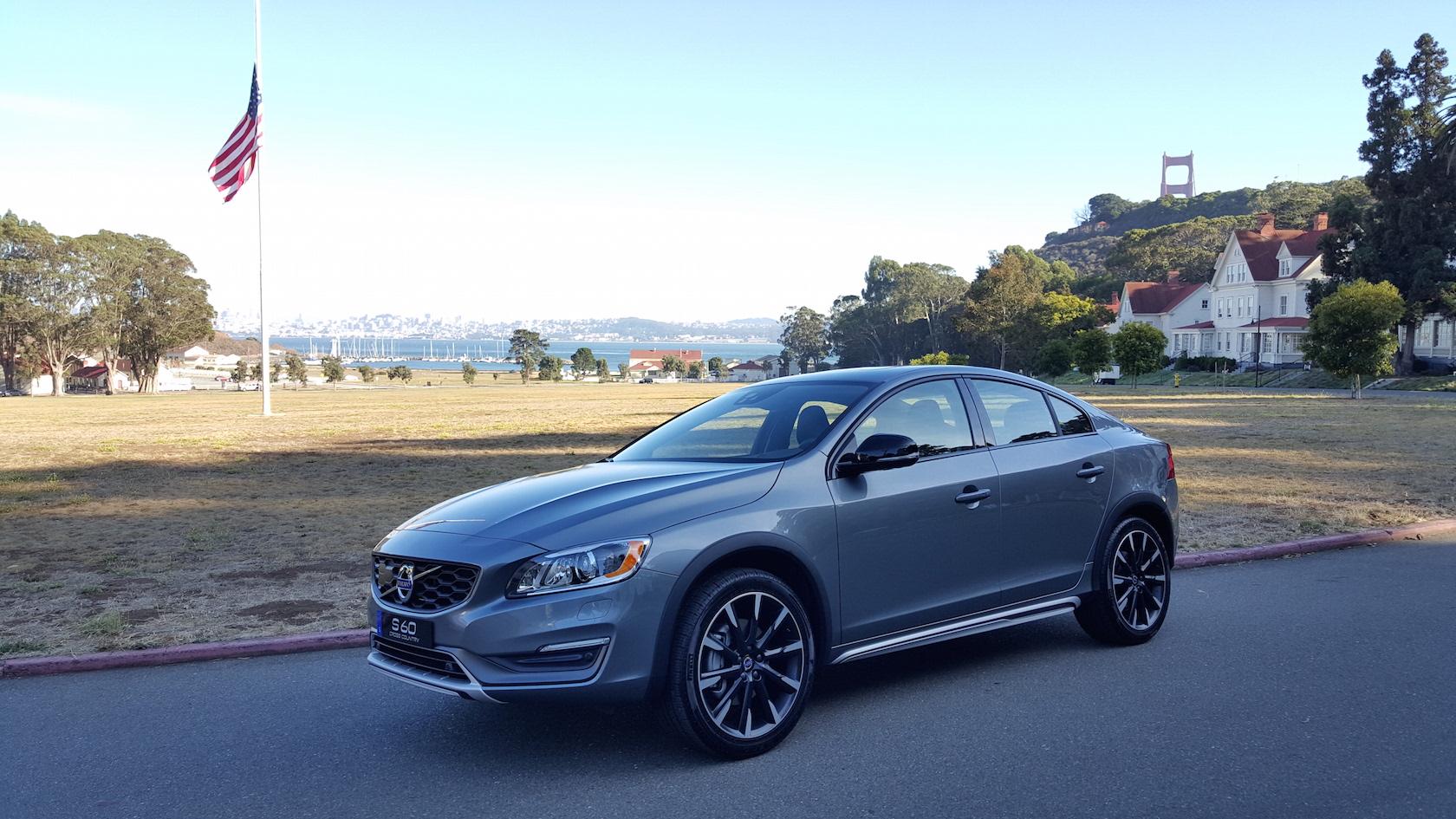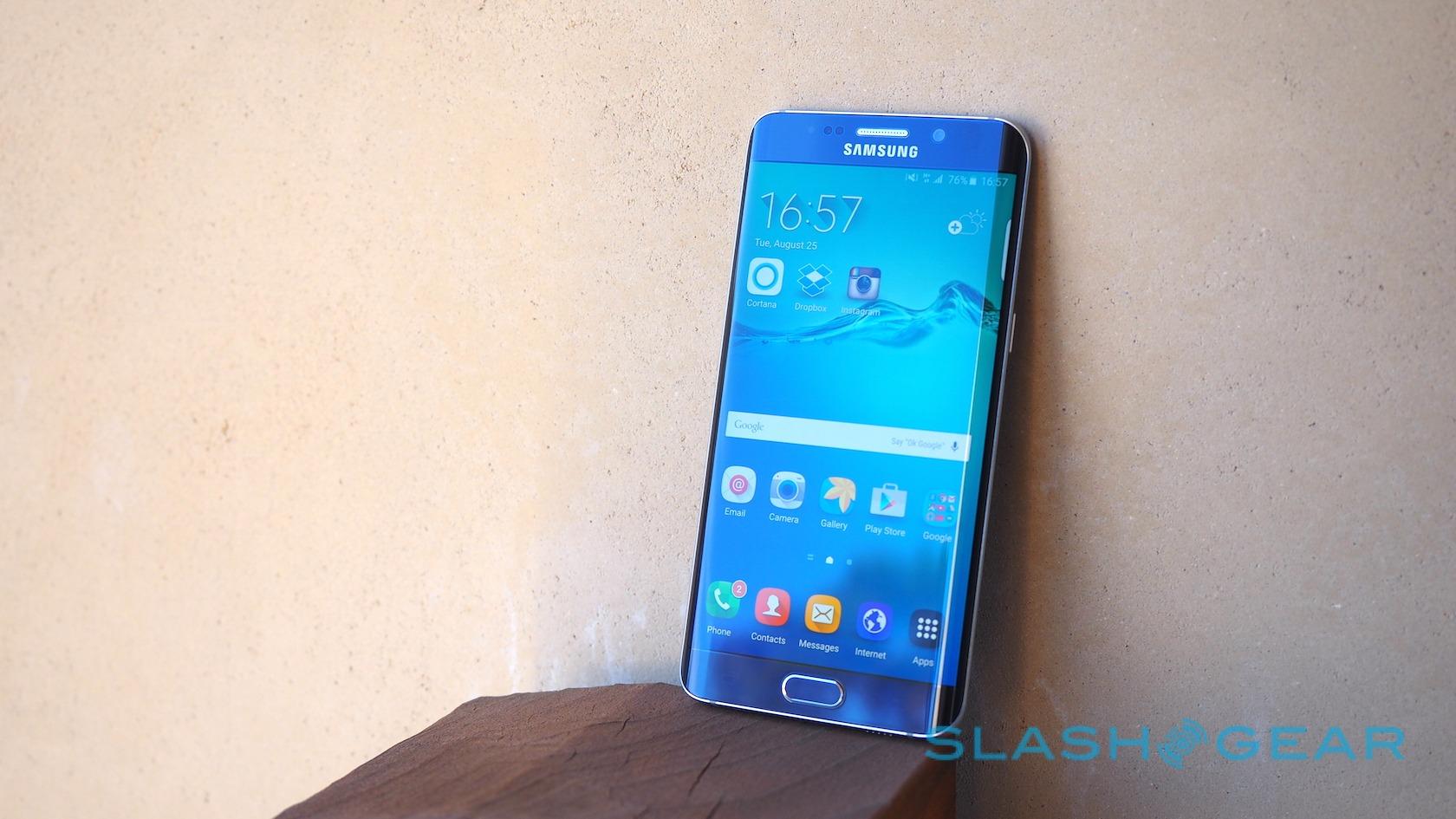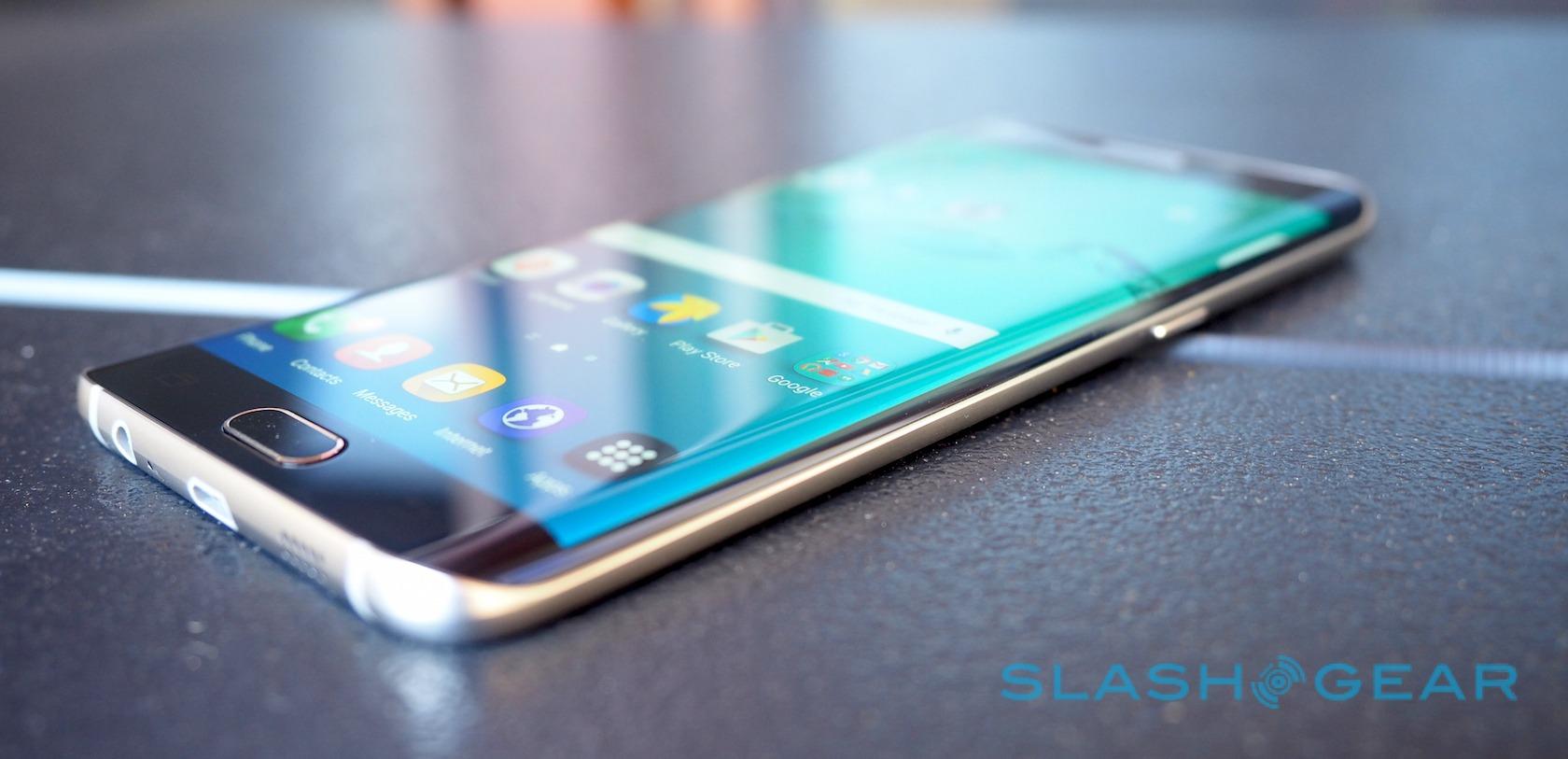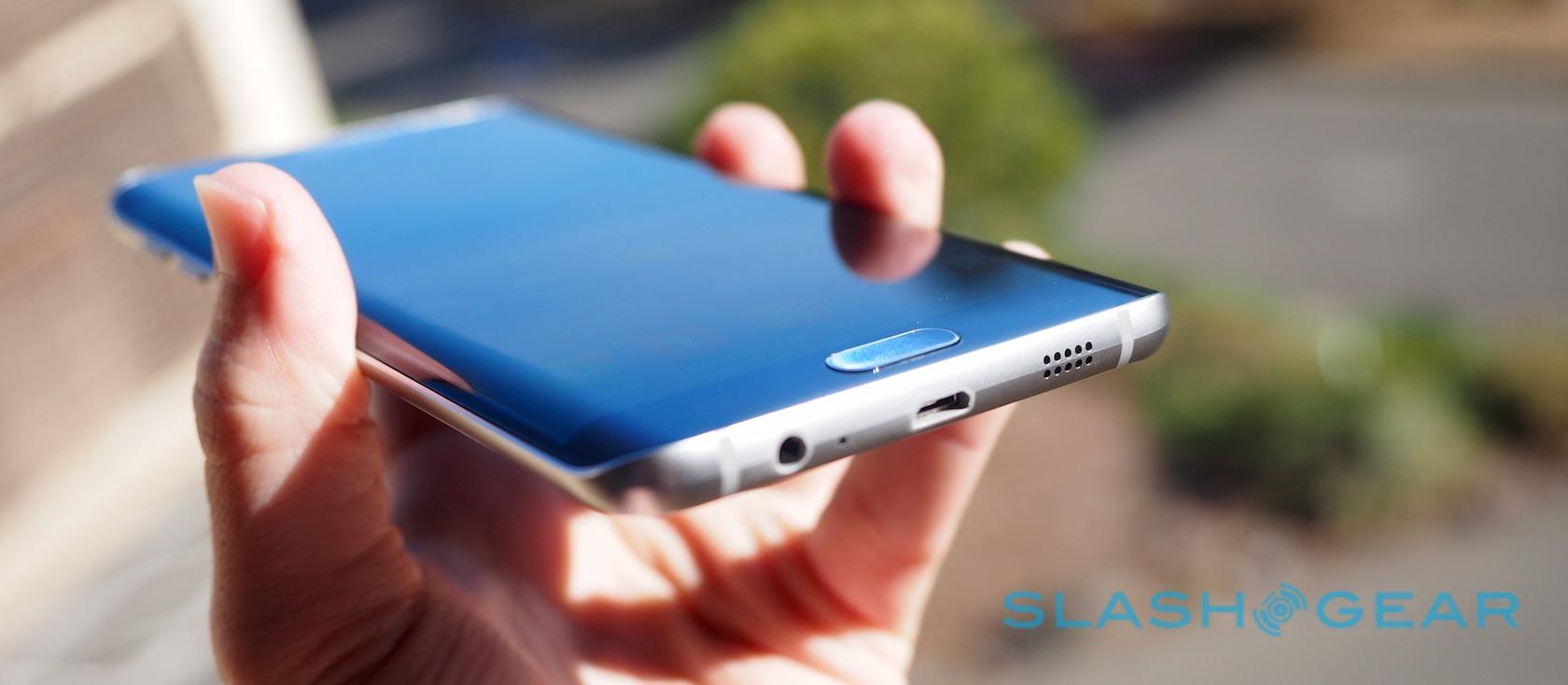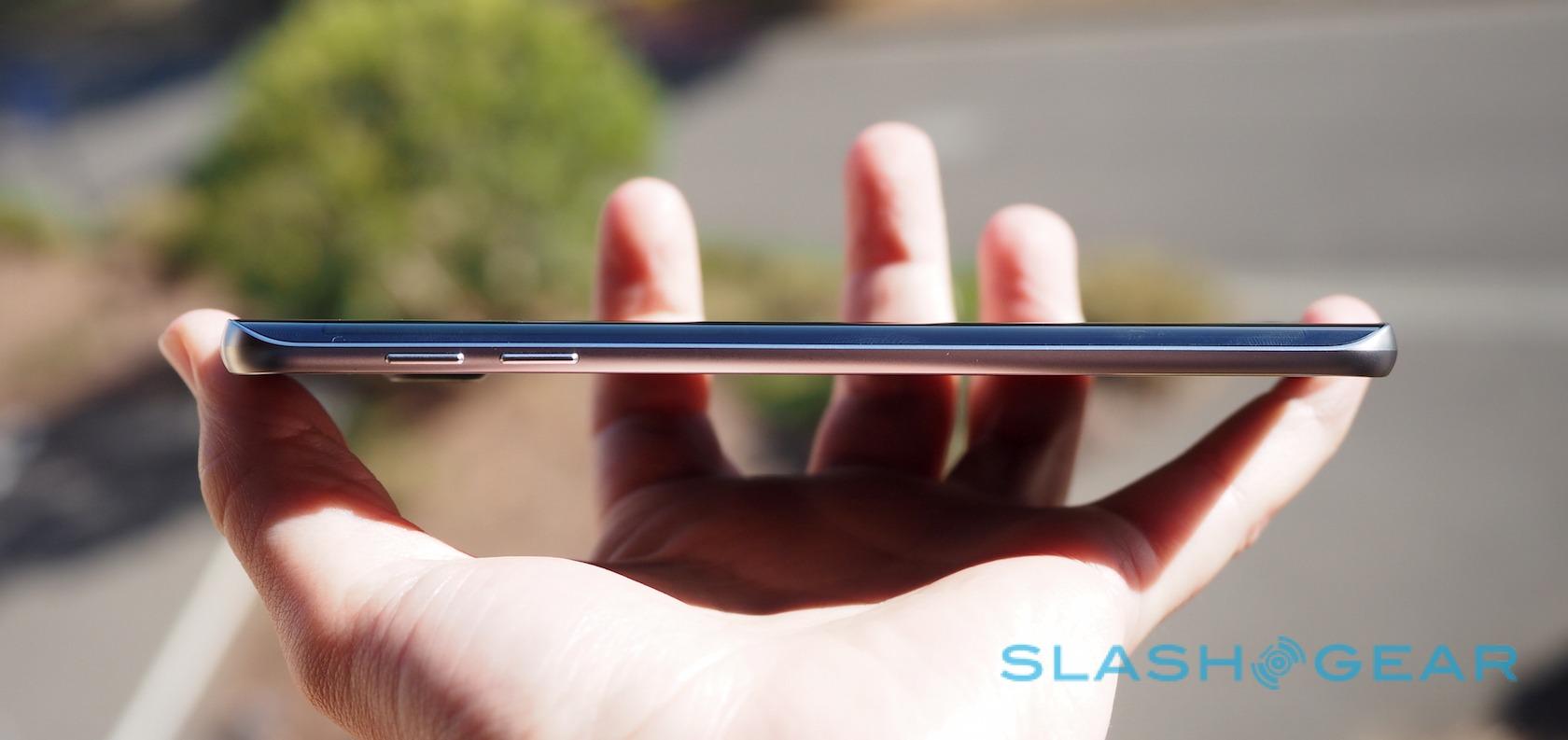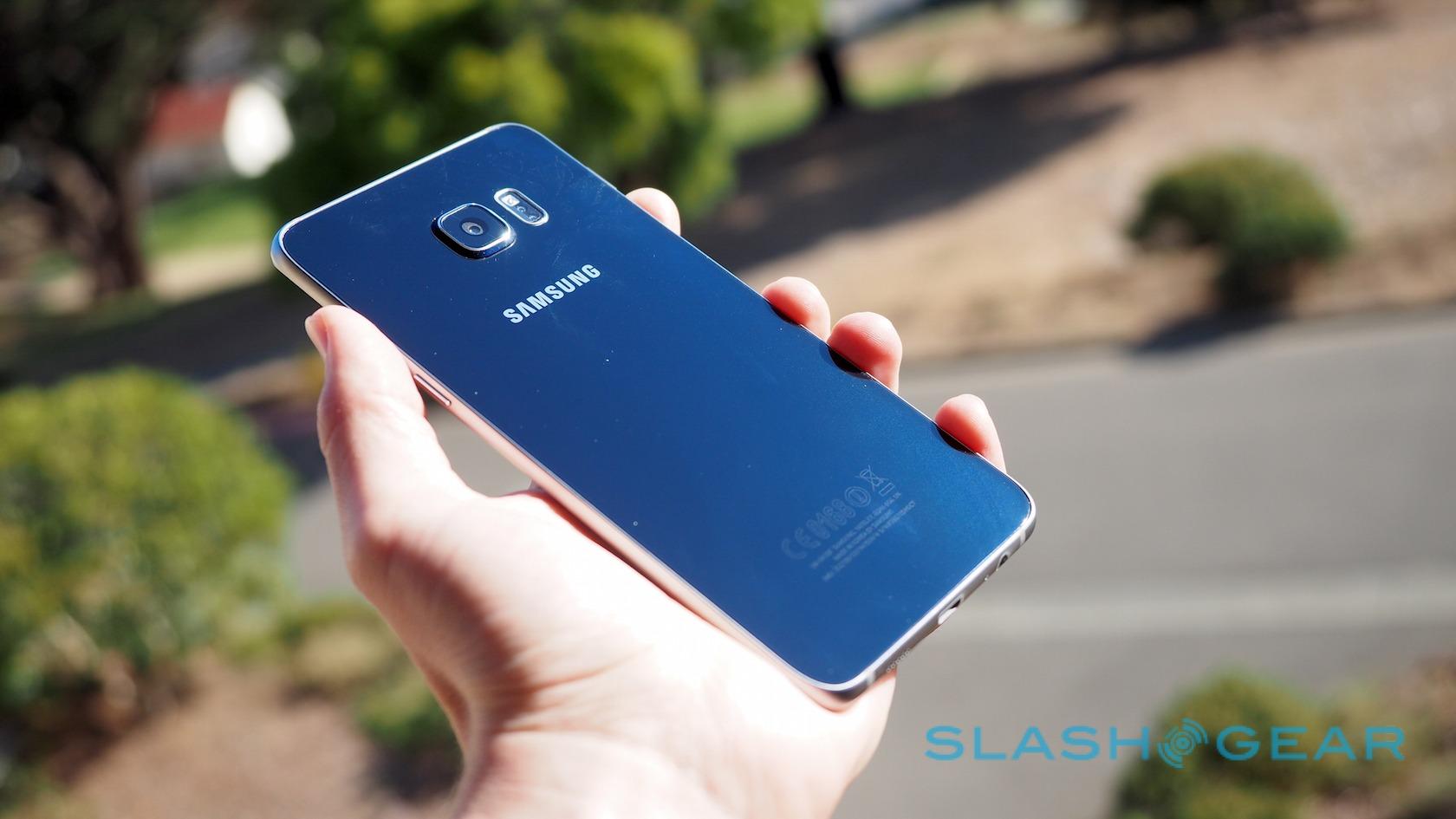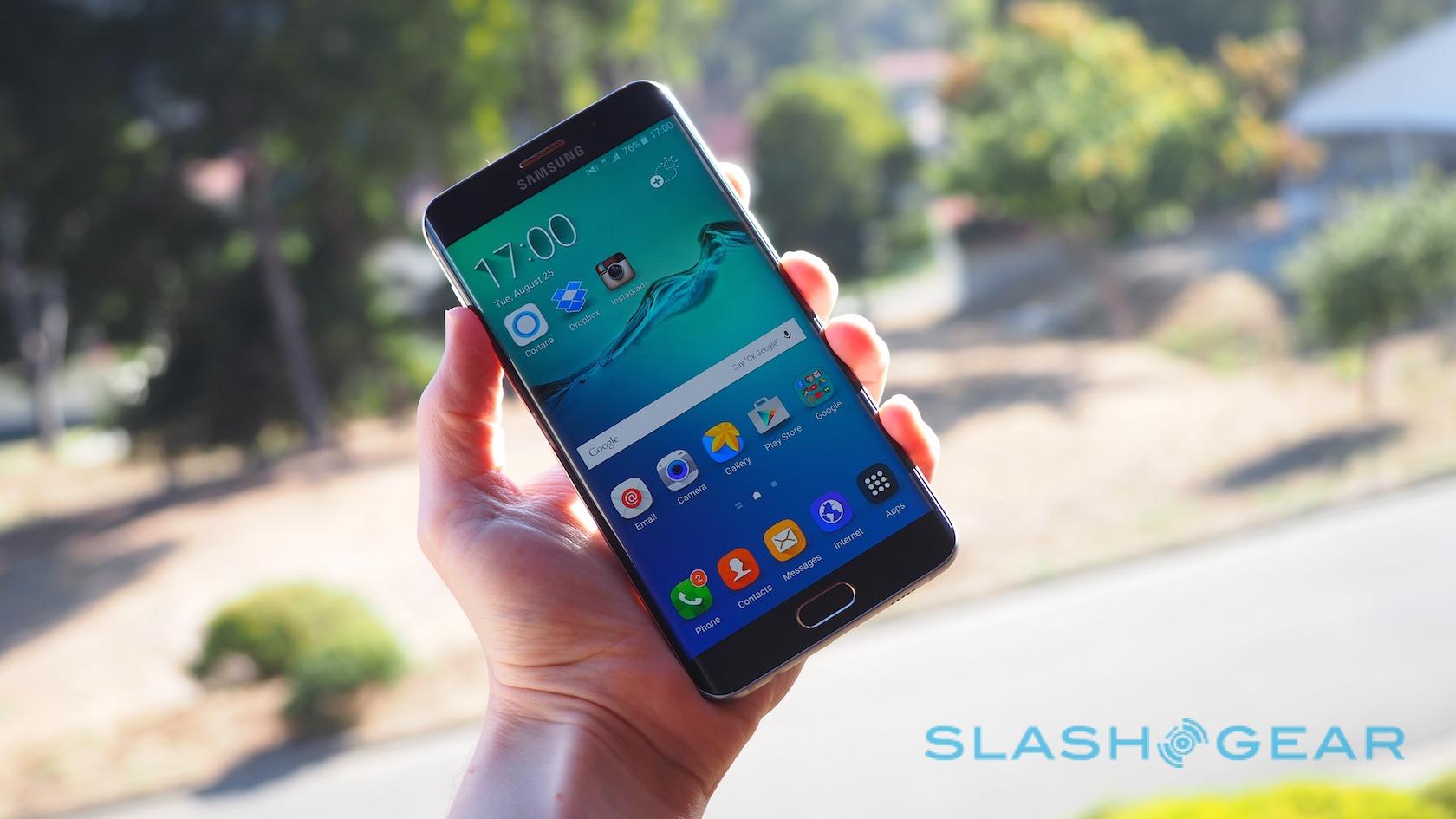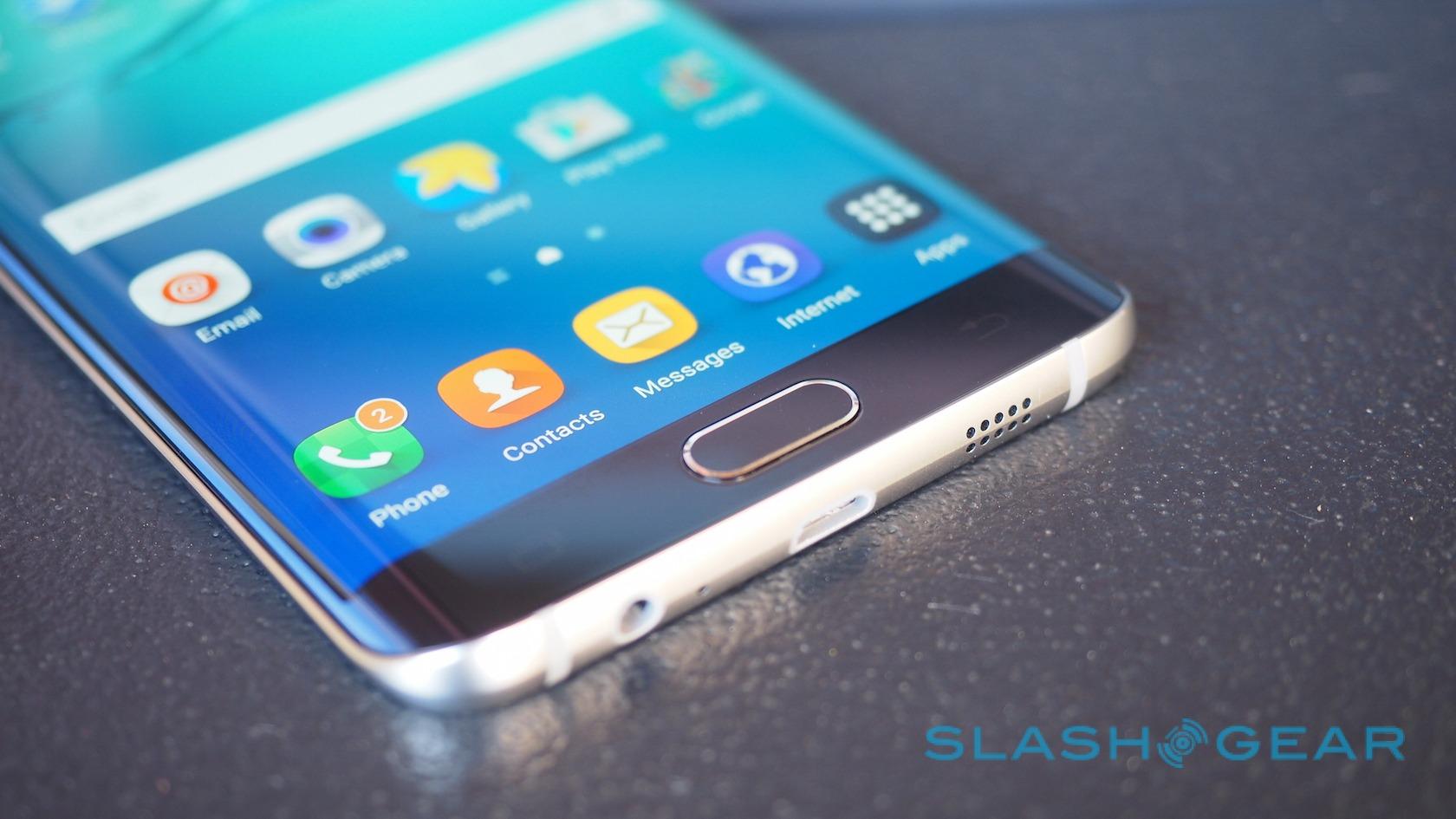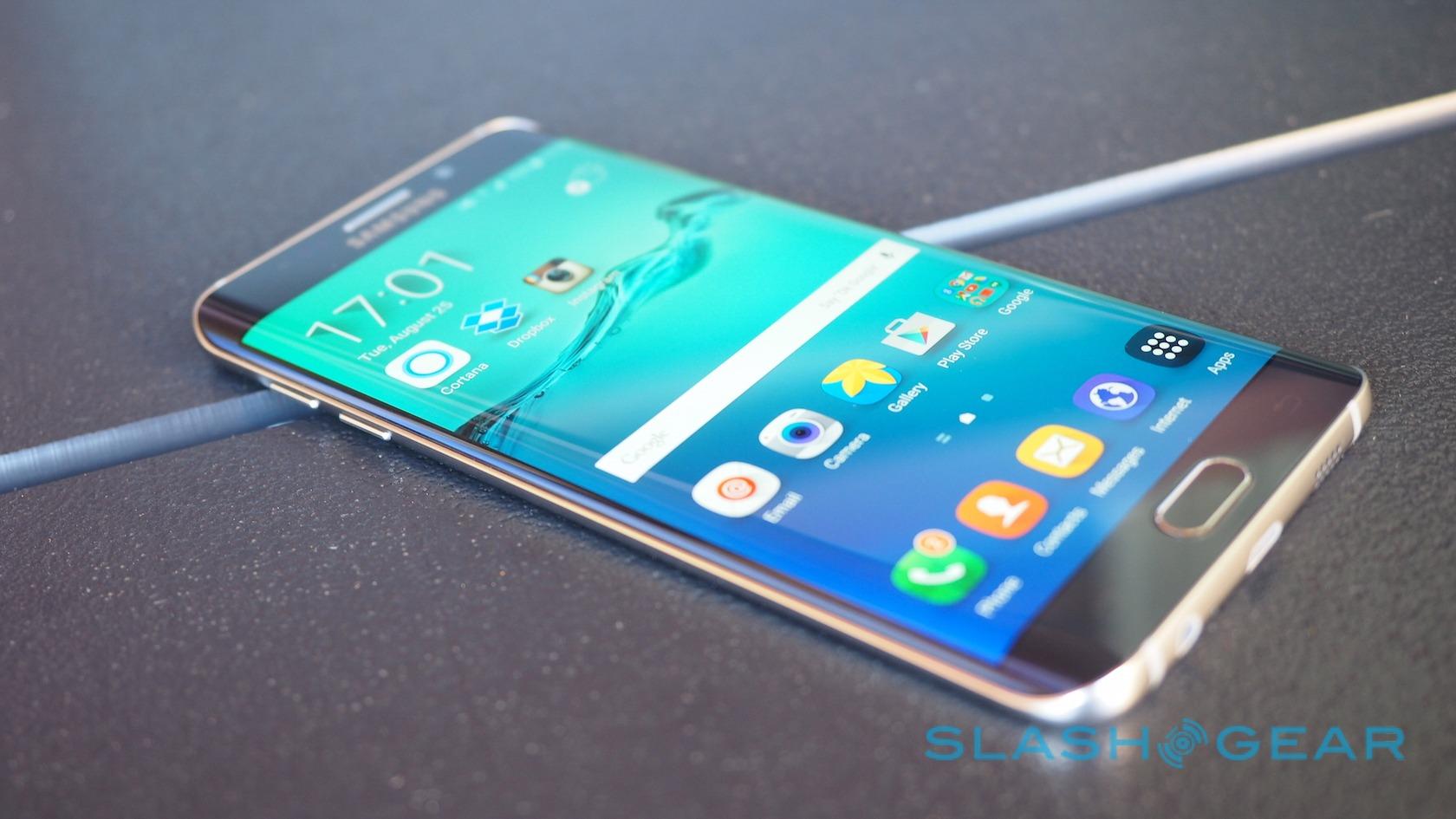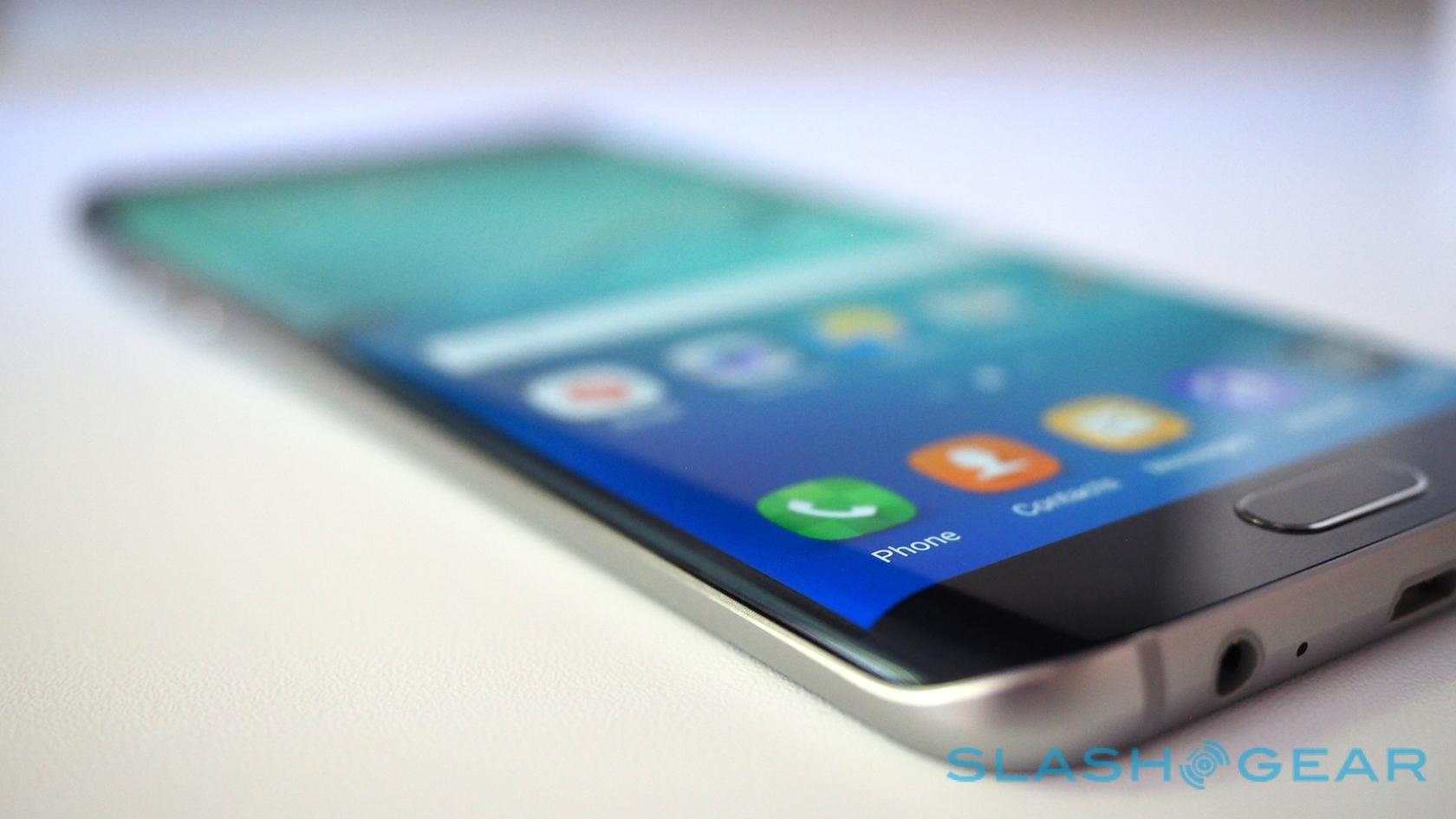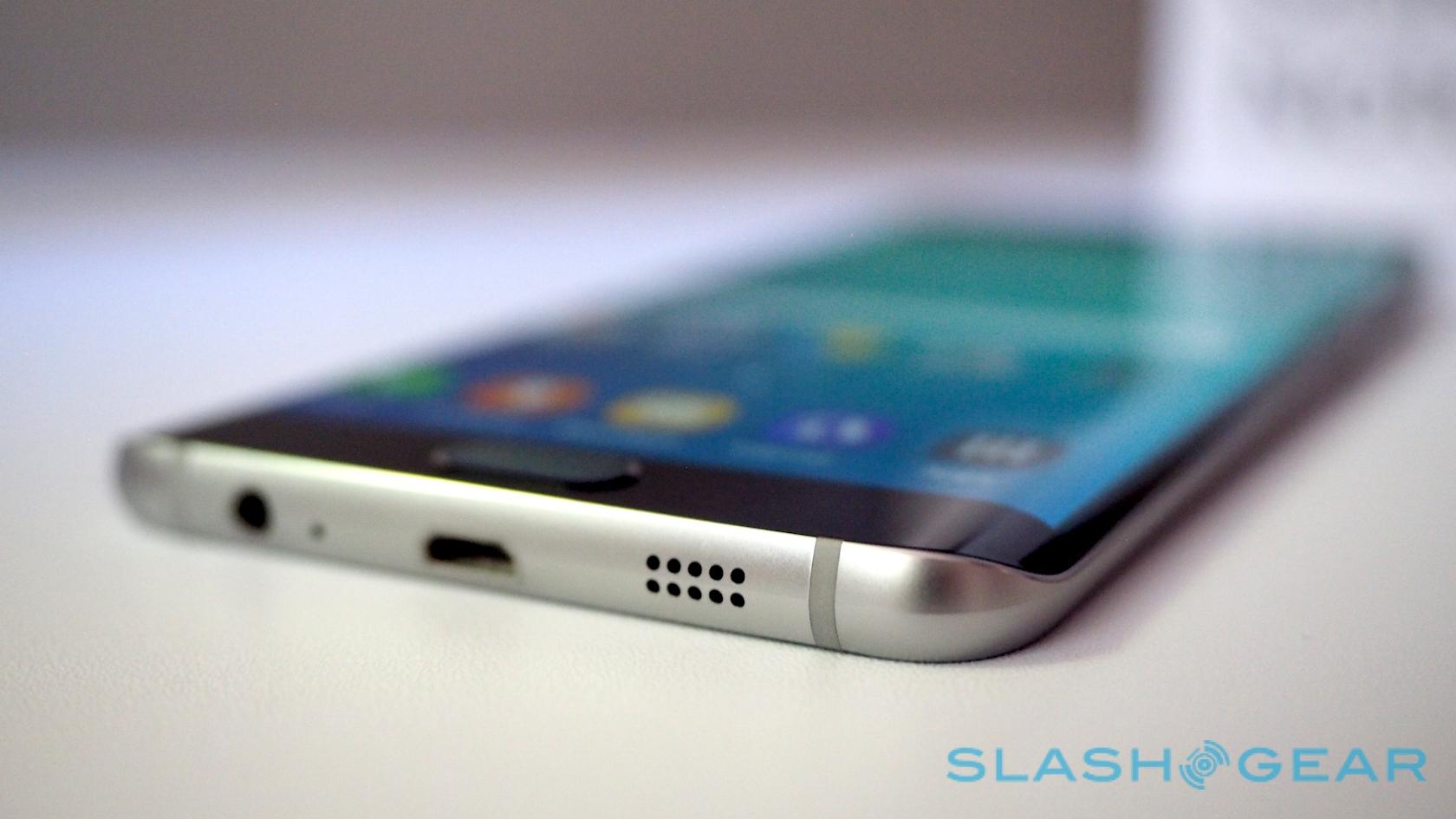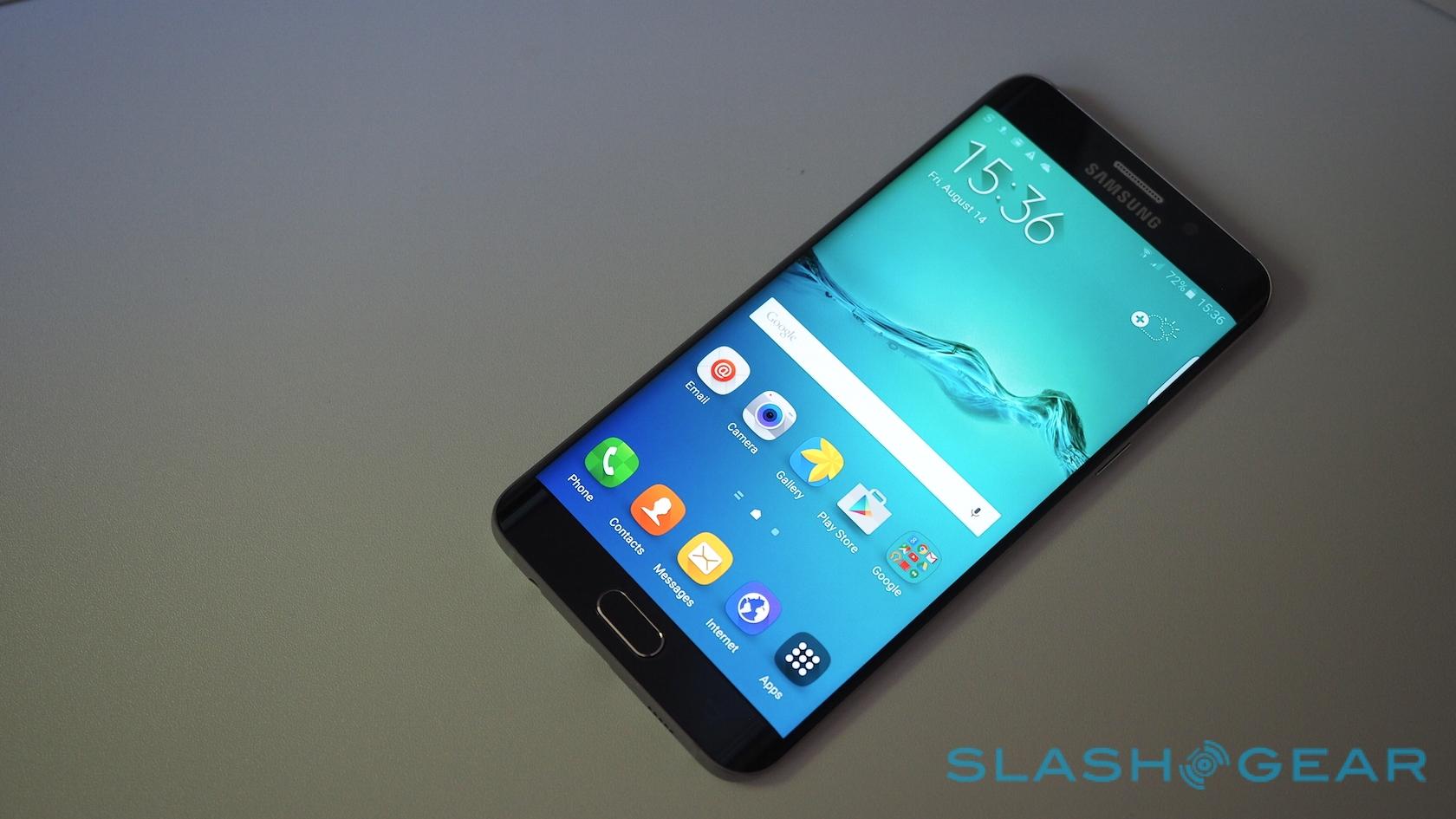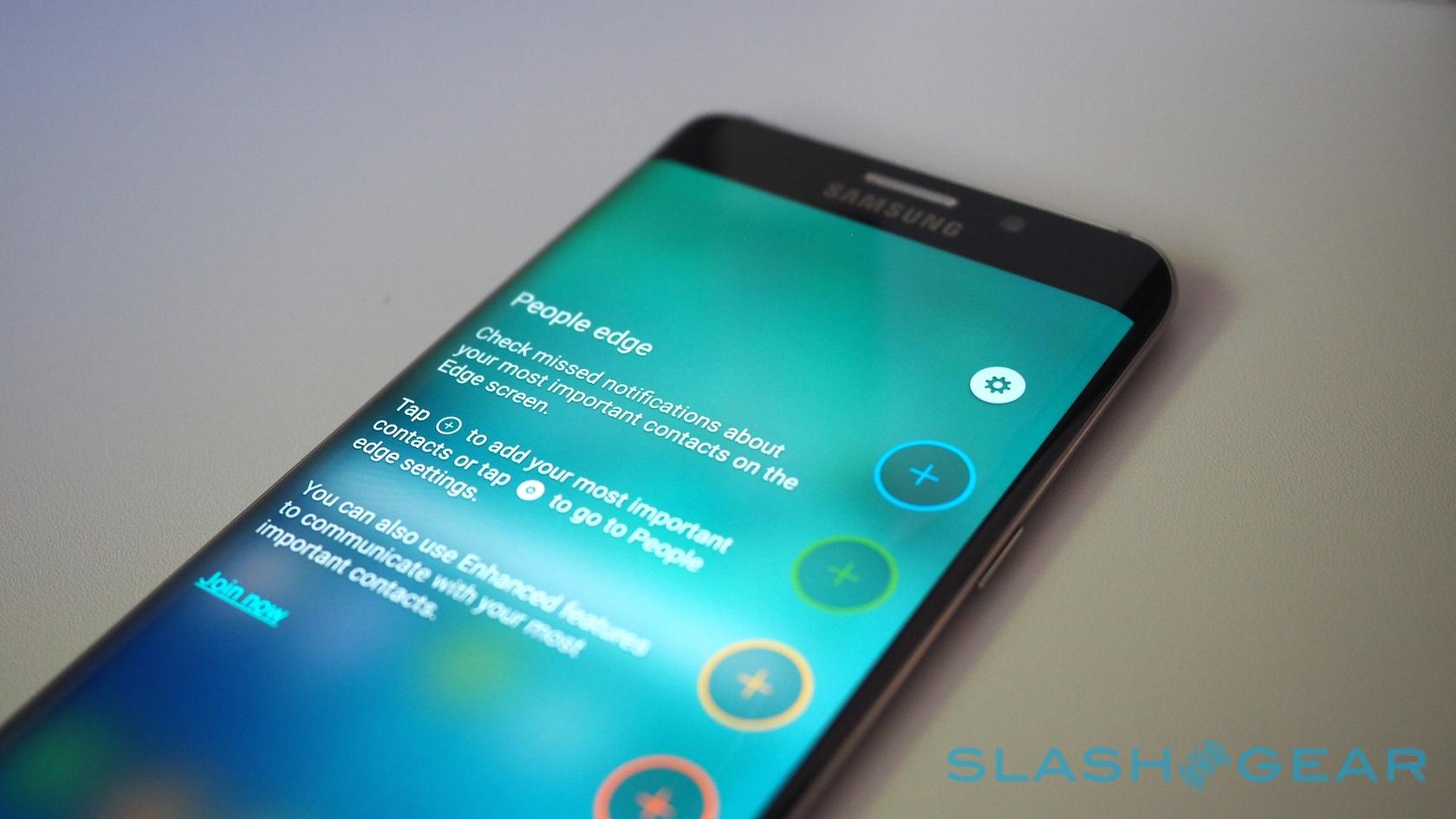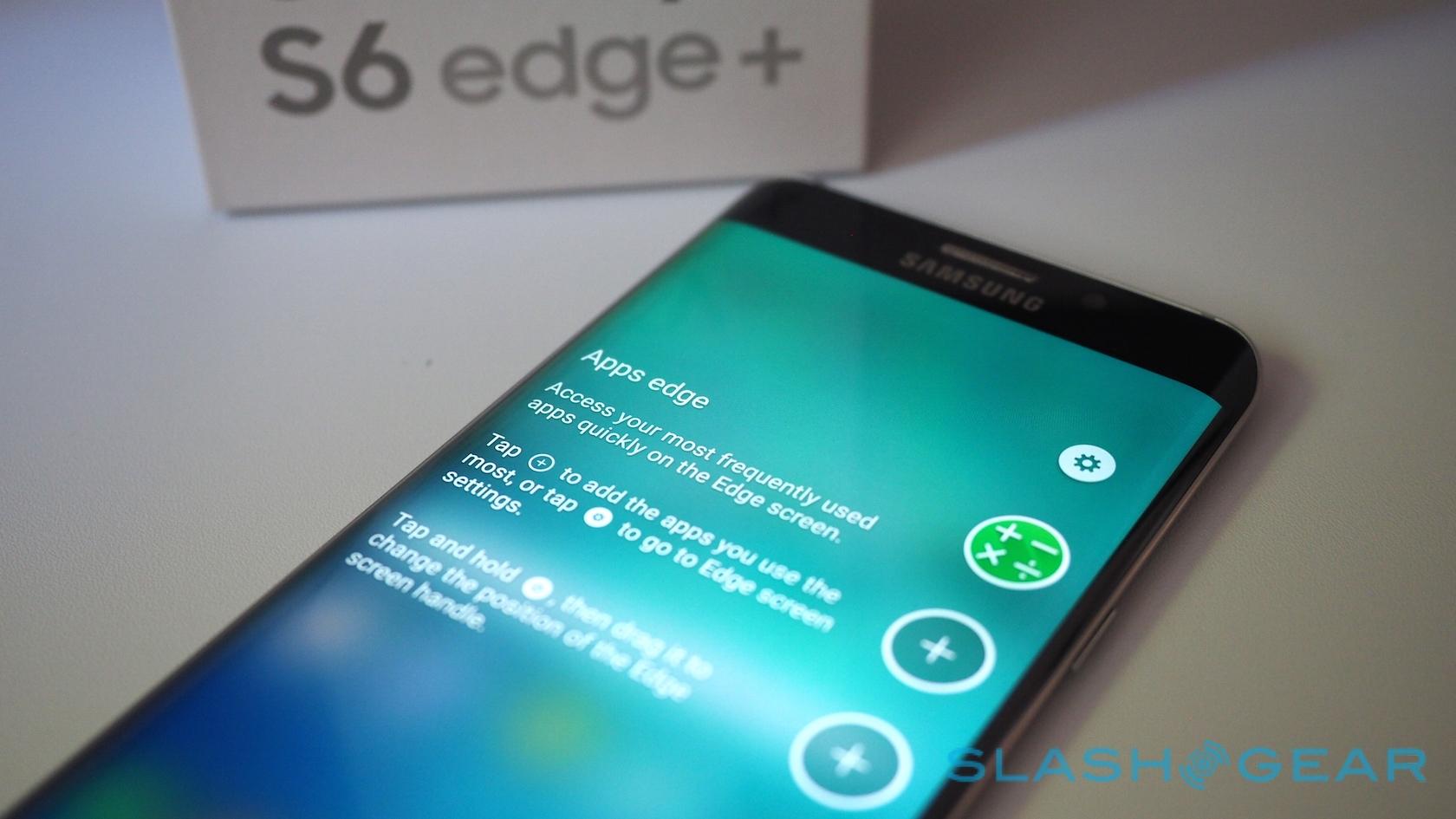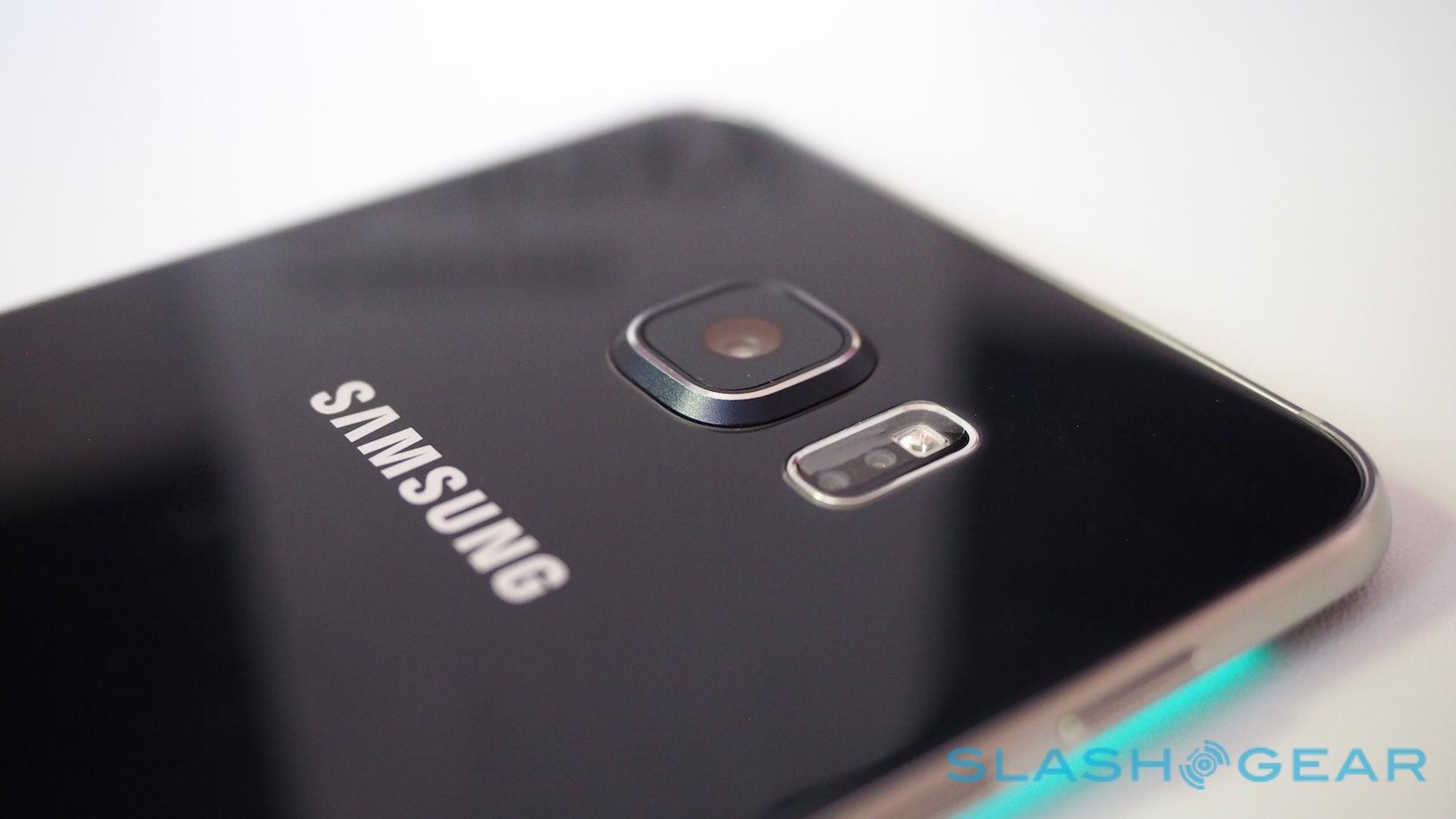Samsung Galaxy S6 edge+ Review
As big as a Note 5, and arguably the most eye-catching smartphone in Samsung's line-up, the Galaxy S6 edge+ is hard to ignore. Curved AMOLED, top-tier specifications, and beautiful construction butt heads with a hefty price tag and questionable usefulness. In short, though the S6 edge+ undoubtedly catches the eye, it's far from certain that it does enough with its unusual hardware to earn a place in your pocket.
Samsung gave the S6 edge+ a good start in life, taking the well-esteemed hardware found in the original S6 edge and effectively enlarging it. In fact, the two phones are functionally almost identical: the edge+ does get a little extra memory, at 4GB LPDDR4 versus 3GB in the smaller phone, and of course the display is larger, at 5.7-inches.
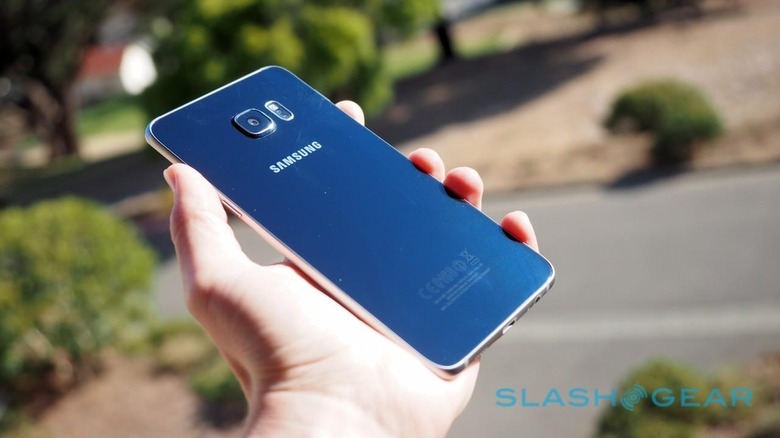
What a screen it is, too. Samsung's investment in curved AMOLED continues to pay off, and if you can't wow your friends with the doubly-tapering charms of the S6 edge+ then it might be time to find people less jaded to hang out with.
At 2560 x 1440 resolution there are effectively more pixels on offer than most people would know what to do with. Viewing angles are practically oblique, brightness cranks up sufficiently high to make outdoor visibility possible, and colors are rich and saturated.
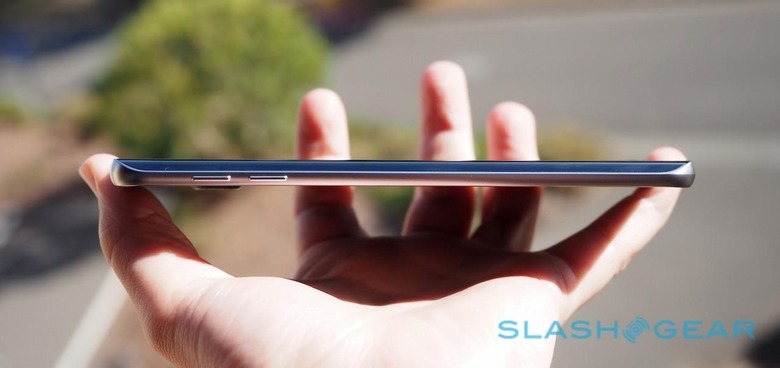
The metal frame used to such good effect in the Note 5 is carried over, too, narrower at the sides of course, but still getting the shard-like power and volume buttons. Samsung has stepped up its game on fit and finish: the metal is smoothly polished, while the Gorilla Glass 4 leaves the whole phone feeling as premium as its not-inconsiderable price tag.
Of course, that sticking to form means that some of the S6 edge's shortcomings are brought along for the ride, too. Compared to the Note 5, which puts its side curves on the back, the S6 edge+'s flat rear doesn't do much to fit with the curvature of the hand. Coupled with the relatively sharp sides, it adds up to a phone that isn't especially comfortable to hold.
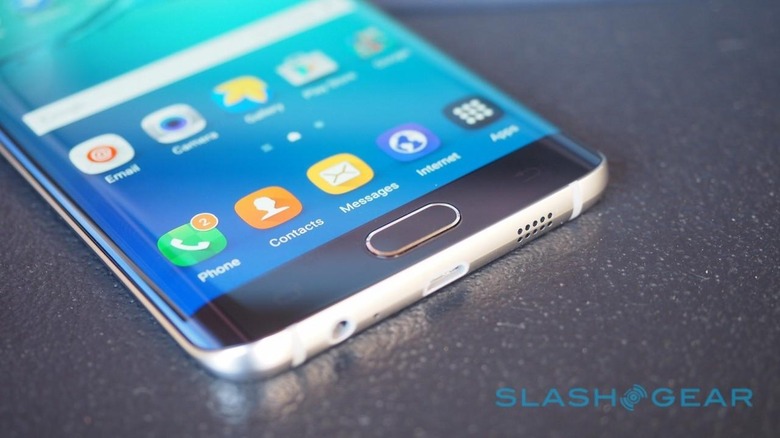
Absent, too, are the long-standing Samsung favorites of a removable battery and microSD slot. They're decisions that'll undoubtedly prove controversial among power-users for months to come, and while personally I'm fine with topping up the 3,000 mAh battery on occasion with fast charging either via USB or wirelessly – the S6 edge+ admirably supporting both Qi and Powermat standards – I'll confess the 64GB maximum storage could prove limiting.
That's because Samsung is positioning the S6 edge+ as the multimedia maven, arguing that the display's curves leave it looking better at video playback. Certainly you can fit a few high-definition or even UHD movies onto the onboard storage, but a 128GB option or the ability to throw in a microSD would've ensured extra headroom.
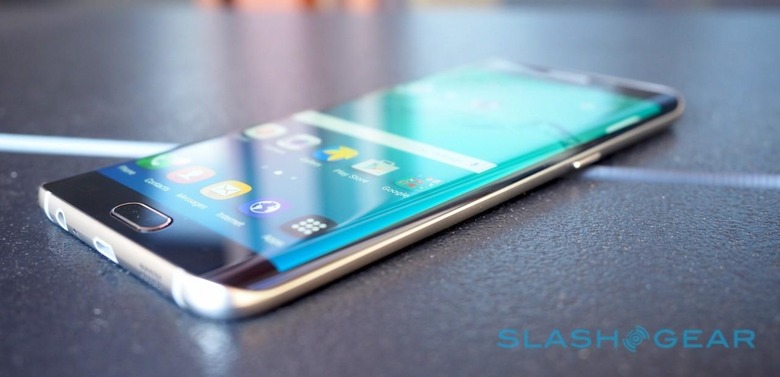
I'm of mixed opinion as to whether the curved screen actually does pay dividends in playback, but that's not the panel's only party trick. The people launcher of the S6 edge, summoned on-screen with a thumb swipe from the side, has been joined with a customizable app launcher, with room for five shortcuts.
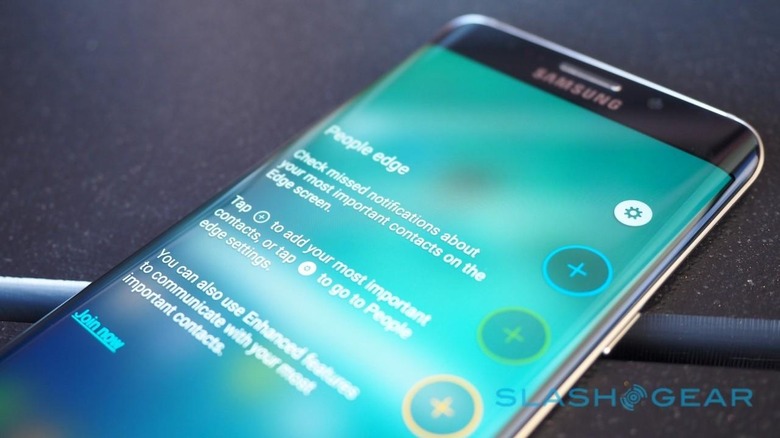
Samsung allows you to reposition the launcher tab at different heights up the edge of the phone, and on either the right or left side. You can also opt to have it visible throughout the device, no matter which app currently has focus.
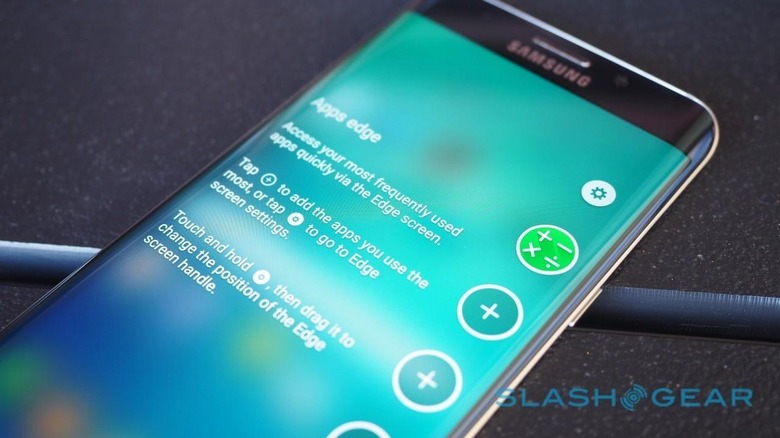
Neat additions, but I'm still not convinced they're either fully useful or particularly benefiting from the display. Certainly there's a tactile pleasure in sliding your thumb across a curve, but beyond that there's no advantage to the eye-catching screen technology. Indeed, when it comes to range of features, the old Galaxy Note Edge still has, well, the edge.
Happily, even if you buy the S6 edge+ solely for aesthetic reasons, you're getting an excellent phone as well. The 64-bit, 14nm Exynos 7420 chipset – an octacore comprising four 2.1GHz cores for everyday tasks with four 1.5GHz cores for low-power use – may have been seen before, but it's swift enough to keep Android 5.1 Lollipop moving along at a clip.
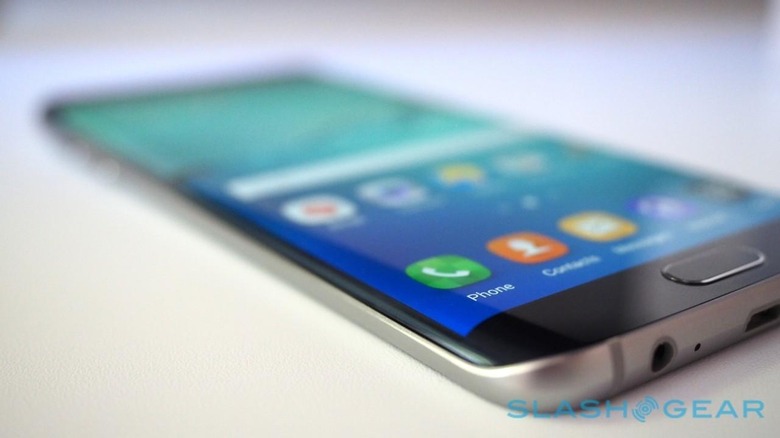
Data, too, is fast. Cat.9 LTE and WiFi a/b/g/n/ac (2.4/5 GHz) with 2x2 MIMO, along with Bluetooth 4.2 LE, ANT+, and a USB 2.0 port can all be found, though it's a disappointment that Samsung didn't bother with USB-C or an IR blaster for remote control use. The fact that the USB port doesn't deliver MHL for connecting TVs and projectors is another weird omission.
Built into the home button – occasionally oddly clicky on my international review phone – is a fingerprint sensor, which no longer demands a swipe but instead simply unlocks with a tap. It'll be the gateway to Samsung Pay once the mobile payments service goes live in the US in September, too.
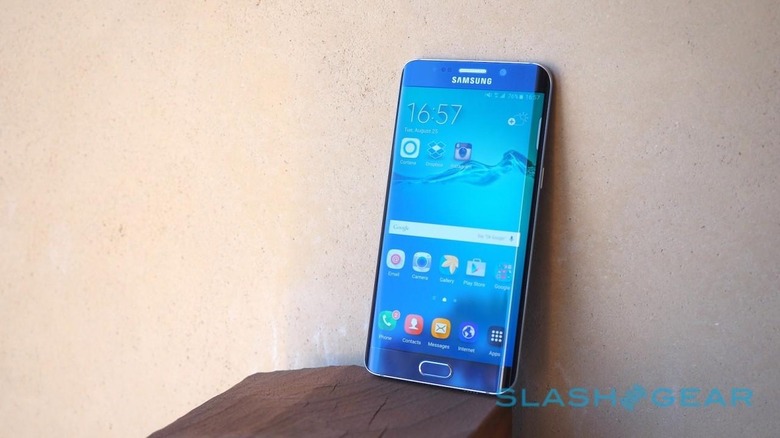
Samsung can't resist reskinning Android, but at least TouchWiz is no longer the janky, domineering heap of wretchedness it once was. Divorced from the S Pen modifications found on the Note 5 – not supported in native Android – the tweaks arguably make less sense, though, here. I could live without Samsung's squircle iconography and its glitzy default color scheme; happily there are more sober options to choose between.
The S6 edge+ works nicely with a companion PC or tablet, too. SideSync has had a revamp alongside the new phones, connecting to them either wirelessly or over USB, and giving you a mirror of the smartphone's touchscreen on your laptop display. You can drag and drop content between the two without worrying about the background handshaking, as well as reply to messages with your full-sized keyboard, and answer calls.
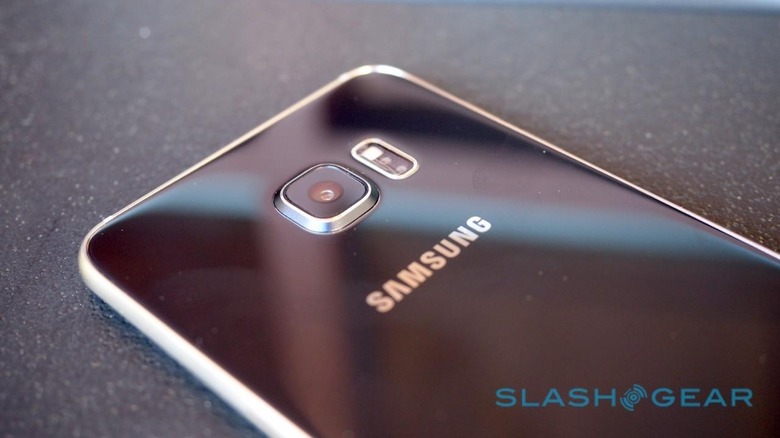
If there's one thing Samsung has excelled in recently, it's photography. Sure enough, the 16-megapixel camera on the S6 edge+ is among the best ways of taking a picture on a mobile device today.
All those megapixels are paired with f/1.9 optics, an LED flash, and optical image stabilization (you get a 5-megapixel camera up-front for selfies). The S6 edge+ will shoot 1080p or 4K video – the latter limited to five minute clips – and there's an HDR mode which usefully shows a real-time preview of the effect so that you know if it'll be worthwhile activating.

Photos are crisp and clean, and though Samsung does err on the side of saturation for colors, it avoids being clownish in the process. Low-light shots are solid, too, though even with the OIS it pays to keep the phone super-steady if you want to avoid blur.
If you're feeling more playful, there are various modes and options like YouTube Live Broadcast – Samsung and YouTube's retort to Periscope and Meerkat, offering near-real-time streaming – and Selective Focus, that aims to artfully blur all but the primary subject.
You don't really need the latter, however, since with a little framing care it's possible to get some suitably dreamy backgrounds without software assistance.
The S6 edge+ I tested was an unlocked, international phone with a T-Mobile USA SIM. Voice calls have been good, with decent audio for both parties. There's no getting around the sheer size of the phablet, mind; like with the Note 5, it can take a little getting used to, holding the phone to the side of your face.
Music, meanwhile, can take advantage of the S6 edge+'s upscaling to 24-bit/192 kHz, though Samsung's own UHQ-BT codec tops out at 24-bit/96 kHz. You'll need a Samsung Level wireless speaker or headphones to take advantage of the latter, however.
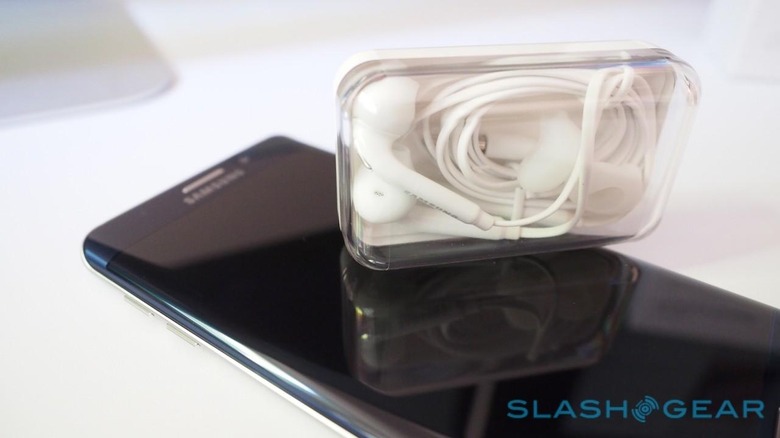
With its 3,000 mAh battery I was able to get through a full day cleanly on a single charge. I do wish Samsung was including a wireless charger in the box, mind; preferably the new fast wireless model which promises to be 1.4x swifter than the regular version. Sadly, that'll cost you extra.
The deja-vu is strong with this one. On the one hand, I admire Samsung's persistence with new screen technologies, and entirely appreciate its evolution to embracing more quality-feeling materials. The Galaxy S6 edge+ looks and feels great, not to mention earning more than its share of questions and compliments by those who saw me using it.
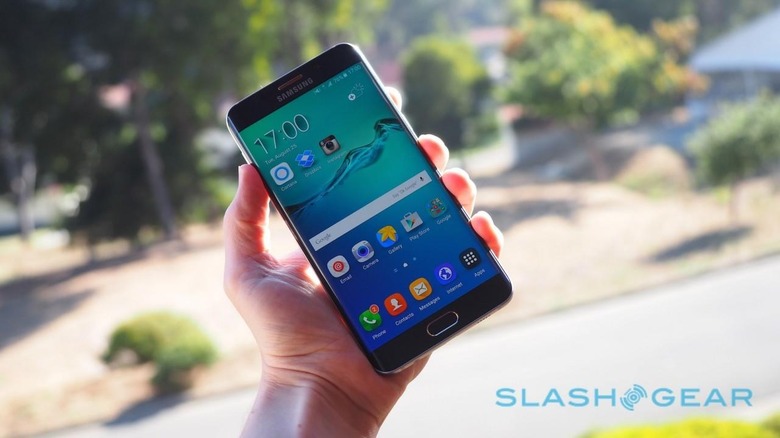
The counter to all that, however, is my uncertainty that Samsung is still quite sure how to actually use those curves productively. They still feel a little like technological advance for its own sake: the people and app launchers are rudimentary, and beyond that the unique display hardly gets a look in.
It's enough to make the not-inconsiderable price tag all the more difficult to stomach. At approximately $815 in 32GB form and $915 in 64GB form – or alternatively around $27 or $30 on 24-month payment plans respectively – it's an expensive phone.
Personally, I think the biggest competition comes from within Samsung's own house. The Galaxy Note 5 may not have the fancy curves, but it does get the excellent S Pen, more flexible software, and a slightly smaller price. Your decision, then, comes down to the respective values you place on design versus usability: I love how Samsung pushes the envelope in hardware, but I can't help but wish the company had a better idea of what to actually do with it.

